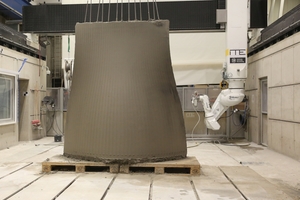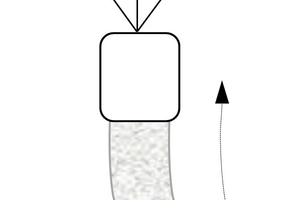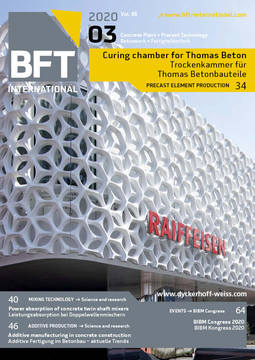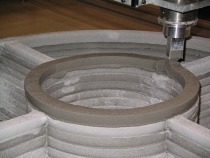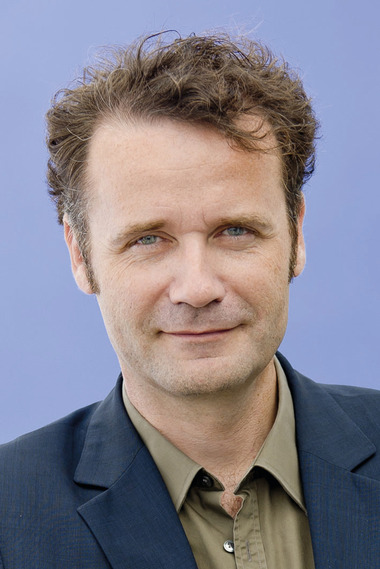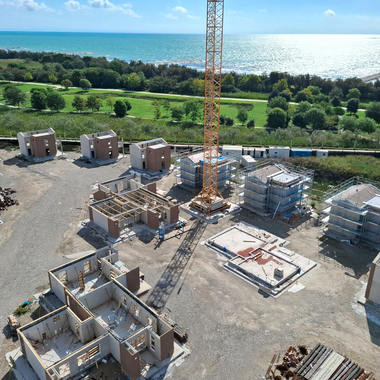Additive manufacturing in concrete construction – current trends and challenges
Applying additive manufacturing methods in concrete construction provides the opportunity to radically change the standard technologies used for producing concrete components. In addition, such techniques are likely to bring about major economic and environmental benefits in the field of structural concrete. This article provides a short overview of current trends and highlights open questions and related challenges.
Applying additive manufacturing in concrete construction provides the opportunity to radically change the standard technologies used for the production of concrete components. In addition, such techniques are likely to bring about major economic and environmental benefits in the field of structural concrete. Research community has identified the technological and economic potentials of additive manufacturing. So that the extent of research and innovation activities in this area has recently been growing exponentially. This article provides a short overview of current trends in concrete construction and highlights open questions and related challenges.
1 Introduction
Additive manufacturing (AM) is a generic term that designates manufacturing processes in which digital 3D model data is used to build components by material deposition in a layer-by-layer process [1]. In everyday language, the term 3D printing is used synonymously with the term additive manufacturing. The global interest in AM has been growing increasingly since 1987. In the meantime, additive manufacturing techniques have gained significant ground in many areas of production and have become a complement to conventional manufacturing methods [2, 3]. Industrial applications are noticeable in the aerospace, automotive, medical equipment and consumer goods sectors, as well as the manufacturing of prototypes for functional testing [4].
In 1997, AM in concrete construction was firstly suggested by Pegna [5]. Ten years later, the actual implementation process began when Behrokh Khoshnevis (University of Southern California) developed a 3D printing technique termed Contour Crafting [6]. At about the same time, Enrico Dini (Monolite UK Ltd.) invented a technology called D-Shape [7]. Over the past few years, the additive manufacturing of concrete has raised a major interest among architects and the construction industry. A diagram showing the growth of projects applying 3D printing in concrete construction is shown in [8].
A turning point occurred in 2012, when the number of projects on 3D printing literally exploded. Currently, the scope of activities and developments is growing so fast so that a state of the art report can be outdated as soon as it is published. Nonetheless, Lim et al. [9], Bos et al. [10], and Wu et al. [11] provided thorough state of the reports in 2012 and 2016, respectively. In 2018, a comprehensive overview of digital manufacturing in the field of concrete construction was published in [12]. A variety of concepts is currently being developed worldwide, and some of them have already been validated in pilot projects [13]. This article intends to provide a short overview of the state of the art, while also highlighting open questions and related challenges.
2 Additive manufacturing technologies in concrete construction
Research on AM in concrete construction has so far been extremely fragmented. The large number of different methods, can be classified in different ways. This article groups the most known technologies into four categories, namely selective binding, extrusion, shotcrete and slipforming based technologies (Fig. 1). The following sections provide explanations of these methods and of the functional principles of the most common approaches.
2.1 Selective binding
The terms selective binding or particle-bed 3D printing are used for describing a 3D printing process that is based on the controlled inrusion of a fluid into a particle bed. In this technique, thin particle layers are deposited and subsequently selectively bound by locally applying a flowable material [14]. That way a solid body previously modeled on the computer is created layer by layer [14]. Techniques based on selective binding can be grouped into two subcategories (Fig. 29). Selective paste intrusion deposits thin layers of a mineral aggregate mix, which are then selectively hardened by the local application of cement paste (Fig. 2a) [14]. Selective cement activation achieves selective consolidation by locally spraying water onto an aggregate/cement mix (Fig. 2b) [14]. The latest state of the art report on selective binding in concrete construction can be found in [15]. The best-known technique based on selective binding is a D-Shape, a particle-bed 3D printing method in which 5 to 10 mm thick layers of sand are selectively considerated into a stone-like material, by applying inorganic seawater and a magnesium-based binder [7]. The latest version of the D-Shape printer is suitable for any granular or fiber mixes in diameters from 0.1 to 4 mm (theoretically, also up to 20 mm) and all types of binders exhibiting a viscosity between water and slurry [7]. This technology features thin layers and a large number of printhead nozzles, so that it enables a high resolution as well as a high geometric freedom. It is thus suitable for manufacturing geometrically complex architectural elements (see examples in [7], [17]). In Germany, the particle-bed technology is developed in a research project at TU Munich [14], [18], [19]. This project focuses on the fundamentals of the selective activation and selective paste intrusion techniques, while also developing suitable printing materials. Fig. 4 shows an element manufactured at TU Munich using the selective paste intrusion technology.
2.2 Extrusion
Extrusion is the most advanced and widespread 3D printing method (see [20] for the current state of the art). Extrusion uses controllable nozzles to deposit layers of premixed material (cement mortar or paste). Most research institutions concentrated on the so-called multi-layer extrusion (Fig. 4) in which the material is deposited in a layer-by-layer process in order to create the object [16]. The best-known multi-layer extrusion approaches are called Contour Crafting [6], [22], [23] and Concrete Printing [20], [21].
Contour Crafting is an extrusion technique invented by Khoshnevis at the University of Southern California [17], [18], [19]. This method is an in-situ process that uses a printing unit mounted on a crane. A controllable nozzle deposits cement mortar in multiple layers, where each layer is about 13 mm thick. This technology has been adopted and developed by various institutions worldwide, including WinSun in Shanghai.
Based on Contour Crafting, a team of researchers at Technical University of Dresden developed the CONPrint3D technology, suitable for printing monolithic cross-sections of multiple decimeters in a single pass (Fig. 5) [24], [25]. CONPrint 3D stands out from other multi-layer extrusion techniques in that it has distinct features, such as using concretes with conventional mineral aggregates (up to 16 mm in size) and producing solid concrete structures as a replaycement for masonry construction.
Concrete Printing (3DCP) [5] is another multi-layer extrusion technique for concrete mortar that was invented at Loughborough University [26], [27]. Unlike Contour Crafting, Concrete Printing is an ex-situ process geared towards greater geometrical freedom and higher resolution levels (individual layers are 4-6 mm thick). This method enables more effective control of the generated shape or form. This technology is currently being improved at several institutions, including Loughborough University [28] and TU Eindhoven [29].
2.3 Shotcrete
Shotcrete 3D Printing (SC3DP) is an innovative technique invented at TU Braunschweig, which combines the basic principles of well-known shotcrete technology with the range of options provided by robotic digital manufacturing (Fig. 6) [21]. Unlike conventional multi-layer extrusion, the SC3DP technology applies the concrete matrix in a layer-by-layer spraying process, using compressed air added in the extrusion nozzle in a controlled manner [21].
Thanks to the additional degrees of freedom of the robot arm (i.e. the printhead nozzle), and the good layer bonding enabled by spraying, the SC3DP technology makes it possible to vary the spraying angle in the course of the manufacturing process [21]. This allows for a greater geometric of the generated elements[21]. Fig. 7 shows a reinforced wall prototype printed using the SC3DP technology.
2.4 Slipforming
Smart Dynamic Casting (SDC) is a robotic adaptive slipforming technique developed in 2012 at ETH Zurich [30], [31], [32]. This method is used for prefabricating custom, optimized structural concrete components with relatively slender cross-sections [31]. During the automated process, a formwork is continuously filled with concrete and moved vertically (Fig. 8) [31], at a speed adjusted with the hydration kinetics of the concrete.
Thus, the concrete can be shaped during its conversion from a soft to a hard material, i.e. in the setting phase. Compared to multi-layer extrusion, this technique provides the added advantage that layer segregation and cold joints can be avoided [31].
3 Opportunities and challenges for additive manufacturing
The growing interest in additive manufacturing in concrete construction demonstrates that many construction stakeholders have recognized the major benefits and the improvement potential [33] associated with these technologies. The most important aspects of this potential include:
Precision and greater geometrical freedom, flexibility in the design and development of new architectural shapes and forms and structural design concepts, such as the the “form follows force” concept and bionic structures
Building without formwork can reduce labor, costs and the amount of generated waste
Increased productivity by automation, shorter construction times, and reduced production costs
Additive manufacturing techniques are already being used successfully for printing a variety of structural components in a number of pilot projects. However, a fair amount of research is still required, and many open questions need to be resolved, to develop practical solutions for the construction industry. These questions particularly relate to the following areas:
Market: Who are the users and where are the limits of these technologies?
Material: full control of the rheology and hydration process is necessary
Reinforcement solutions: How is the reinforcement integrated into structural components?
In-situ robotic applications: lack of satisfactory robotics-based solutions for in-situ application
Validation: There are currently no established methods for testing the properties of fresh and hardened concrete; nor are there any relevant codes and standards.
4 Summary and outlook
Additive manufacturing technologies, as for instance 3D printing, have become an integral part of the modern industrial production, and they have been commercialized to a large extent. These emerging technologies open up a huge potential and can bring about major economic and technical benefits for concrete construction. Research activities in this field are growing exponentially, and some sophisticated printing solutions have already been developed. Nonetheless, there is still a high unmet research need with respect to the rheological properties of fresh concrete, in-situ robotic solutions, integration of reinforcement, test methods etc. Some of the open questions are likely to be resolved in the near future,
since the intensity of R&D activities in the area of digital concrete construction is rapidly increasing [13].
Architects, materials researchers, construction engineers, robotics specialists etc. need to adopt an interdisciplinary approach in order to jointly develop and implement practical solutions and to create acceptance among users. Furthermore, specific types of collaboration and platforms for a more widespread dissemination of sophisticated engineering concepts and the transfer of knowledge and expertise to all interdisciplinary areas should be established in order to successfully apply these solutions in the field of concrete construction.
REFERENCES/LITERATUR
In: Automation in Construction, vol. 21, S. 262 – 268, 1, 2012.
vol. 13, no. 1, S. 5 – 19, 2004.
In: Automation in Construction, vol. 21, S. 262 – 268, 1, 2012.
In: Virtual and Physical Prototyping, vol. 11, no. 3, S. 209 – 225, 2016.

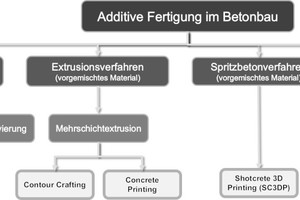
![2: Schematic representation of a) selective paste intrusion and b) selective cement activation. Z = Zement (cement), W = water, G = Mineral aggregate (according to [16])](https://www.bft-international.com/imgs/1/5/4/1/0/7/5/tok_e39db366bccd394258fa446f1212ca46/w300_h200_x600_y297_HA_1040_Fig.2_Bild_2-4465ec94ba3144f2.jpeg)
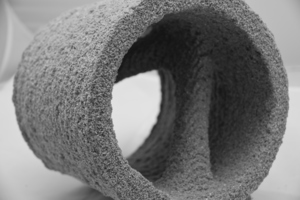
![4: Schematic representation of layered extrusion: Z = Zement (cement), W = water, G = Gesteinskörnung (mineral aggregate) (according to [16])](https://www.bft-international.com/imgs/1/5/4/1/0/7/5/tok_c86f99e6e2bd529880dfbdadfe595167/w300_h200_x322_y559_HA_1040_Fig.4_Bild_4-f52ff5a8624eca99.jpeg)
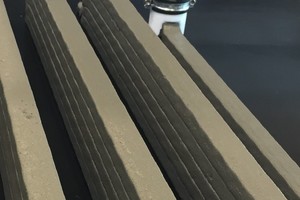
![6: Schematic view of shotcrete 3D printing: Z = Zement (cement), W = water, G = Gesteinskörnung (mineral aggregate) (according to [21])](https://www.bft-international.com/imgs/1/5/4/1/0/7/5/tok_63bcabfeb410b24c821a31607dceb144/w300_h200_x600_y439_HA_1040_Fig.6_Bild_6-32c9b375d69f3b9f.jpeg)
